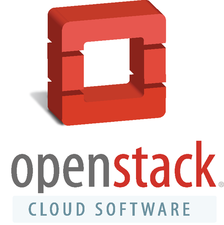The open source model becomes an inspiration
At the Speed of Open Source

If OpenStack is wildly successful, it is because it has learned from open source.
Angel Diaz, Vice President of Cloud Architecture and Technology at IBM, recalls the meeting in which he convinced CEO Sam Palmisano that IBM should support OpenStack. "It didn't make sense to make another open source competitor," he says. "That does no good to anybody. And Sam looked at me and said, 'That's great. Make it bigger than Linux'."
Several years later, OpenStack may have already reached Palmisano's objective. The OpenStack Foundation now includes 800 corporations and organizations and 2,000 code contributors. As Alan Clark, a director at SUSE who currently chairs the OpenStack Foundation board, points out, these numbers are comparable to those of the Linux kernel [1], prompting Clark to call OpenStack "The Linux of the Cloud."
However, the comparison goes deeper than numbers. Foundation leaders attribute OpenStack's success directly to Linux and open source software and their example. "Technological innovation, especially in the last twenty or thirty years, has been driven by the innovation of communities," says Diaz. "Linux was a great example of that." In fact, free software is viewed as so central to the continuing success of OpenStack that Diaz adds matter-of-factly, "If you're not building your cloud so that it's open by design, you're building a dead-end cloud. You cannot move at the pace that you have to in order to be in the market."
[...]
Buy this article as PDF
(incl. VAT)
Buy Linux Magazine
Subscribe to our Linux Newsletters
Find Linux and Open Source Jobs
Subscribe to our ADMIN Newsletters
Support Our Work
Linux Magazine content is made possible with support from readers like you. Please consider contributing when you’ve found an article to be beneficial.

News
-
Parrot OS Switches to KDE Plasma Desktop
Yet another distro is making the move to the KDE Plasma desktop.
-
TUXEDO Announces Gemini 17
TUXEDO Computers has released the fourth generation of its Gemini laptop with plenty of updates.
-
Two New Distros Adopt Enlightenment
MX Moksha and AV Linux 25 join ranks with Bodhi Linux and embrace the Enlightenment desktop.
-
Solus Linux 4.8 Removes Python 2
Solus Linux 4.8 has been released with the latest Linux kernel, updated desktops, and a key removal.
-
Zorin OS 18 Hits over a Million Downloads
If you doubt Linux isn't gaining popularity, you only have to look at Zorin OS's download numbers.
-
TUXEDO Computers Scraps Snapdragon X1E-Based Laptop
Due to issues with a Snapdragon CPU, TUXEDO Computers has cancelled its plans to release a laptop based on this elite hardware.
-
Debian Unleashes Debian Libre Live
Debian Libre Live keeps your machine free of proprietary software.
-
Valve Announces Pending Release of Steam Machine
Shout it to the heavens: Steam Machine, powered by Linux, is set to arrive in 2026.
-
Happy Birthday, ADMIN Magazine!
ADMIN is celebrating its 15th anniversary with issue #90.
-
Another Linux Malware Discovered
Russian hackers use Hyper-V to hide malware within Linux virtual machines.

